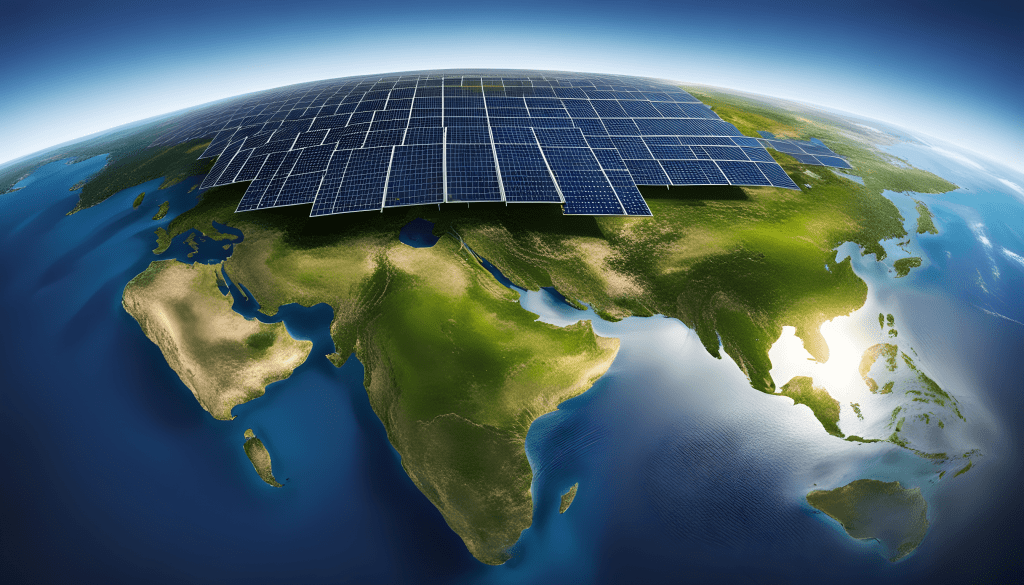As the global demand for renewable energy grows, solar power is emerging as a key player in reducing carbon emissions and combating climate change. Beyond its environmental benefits, solar energy also has the potential to support wildlife conservation efforts, creating a harmonious relationship between energy production and biodiversity protection.
In this blog, we’ll explore how solar energy can coexist with and even enhance wildlife conservation, ensuring a sustainable future for both people and the planet.

1. The Environmental Impact of Traditional Energy Sources on Wildlife
Fossil fuel-based energy production has long been a threat to wildlife and ecosystems. The extraction, transportation, and burning of fossil fuels contribute to:
- Habitat Destruction: Clearing land for coal mines, oil rigs, and pipelines destroys habitats critical to wildlife survival.
- Pollution: Emissions from power plants contaminate air, water, and soil, endangering species and ecosystems.
- Climate Change: Rising temperatures and erratic weather patterns disrupt habitats, food sources, and migration patterns.
Switching to solar energy mitigates these issues, offering a cleaner and safer alternative for wildlife.
2. Solar Farms and Habitat Preservation
Solar farms are often built on large expanses of land, which raises concerns about habitat disruption. However, with thoughtful planning and innovative practices, solar installations can coexist with wildlife and even promote biodiversity.
Dual-Use Land Practices
- Pollinator-Friendly Plants: Solar farms can incorporate wildflowers and native plants to support pollinators like bees and butterflies.
- Habitat Creation: Solar installations can provide shelter and nesting grounds for birds, small mammals, and insects.
- Agrivoltaics: Combining solar panels with agricultural activities allows land to serve multiple purposes, benefiting farmers and wildlife alike.
Case Study: The UK’s Solar Meadows
In the United Kingdom, many solar farms have been designed as “solar meadows,” featuring wildflower planting and biodiversity initiatives. These projects not only generate clean energy but also create thriving habitats for pollinators and other species.
3. Protecting Migratory Birds with Solar Energy
Migratory birds face numerous threats, including habitat loss and climate change. Solar energy can play a role in protecting these species by reducing reliance on fossil fuels and preserving migratory routes.
Solar Solutions
- Solar installations can avoid key migratory paths and nesting areas during site selection.
- Reflective materials and specific panel orientations reduce the risk of bird collisions.
- Renewable energy offsets reduce greenhouse gas emissions, protecting habitats from the adverse effects of climate change.
4. Floating Solar Farms and Aquatic Ecosystems
Floating solar farms, installed on reservoirs and other water bodies, provide innovative opportunities for wildlife conservation.
Benefits
- Reduced Water Evaporation: By covering water surfaces, floating solar panels reduce evaporation, preserving water resources for aquatic life.
- Minimized Land Use: These installations eliminate the need to clear terrestrial habitats.
- Cooler Water Temperatures: The shade provided by panels can lower water temperatures, benefiting fish and other aquatic species.
Example: India’s Floating Solar Projects
India’s floating solar farms on reservoirs support fish farming while generating clean energy, showcasing a harmonious balance between renewable energy and aquatic ecosystems.
5. Innovations in Wildlife-Friendly Solar Design
Solar energy developers are increasingly incorporating wildlife-friendly designs to ensure minimal impact on local ecosystems.
Examples
- Wildlife Corridors: Maintaining corridors around solar installations allows animals to move freely between habitats.
- Elevated Solar Panels: Panels raised on stilts enable vegetation to grow underneath, supporting grazing animals and insects.
- Solar-Powered Wildlife Monitoring: Using solar energy to power tracking devices and cameras aids conservation efforts by monitoring endangered species.
6. Addressing Challenges in Solar and Wildlife Integration
Despite its benefits, solar energy development can sometimes disrupt wildlife if not managed properly. Common challenges include:
- Habitat displacement during construction.
- Heat island effects in large-scale solar installations.
- Glare from panels potentially confusing some bird species.
Solutions
- Conduct comprehensive environmental impact assessments before site development.
- Use anti-reflective coatings on panels to reduce glare.
- Engage conservationists in the design and management of solar projects.
7. Solar Energy as a Tool for Wildlife Conservation Projects
Solar energy is increasingly being used to power wildlife conservation projects in remote areas.
Applications
- Anti-Poaching Efforts: Solar-powered surveillance systems help monitor protected areas and deter poaching.
- Remote Research Stations: Solar panels provide electricity for facilities studying endangered species.
- Wildlife Watering Stations: Solar-powered pumps maintain water sources for animals in arid regions.
Case Study: African Wildlife Conservation
In Africa, solar energy powers ranger stations and wildlife sanctuaries, ensuring sustainable operations while reducing dependence on diesel generators.
8. The Broader Impact of Solar Energy on Biodiversity
By reducing carbon emissions and mitigating climate change, solar energy indirectly supports wildlife on a global scale:
- Preventing habitat loss due to rising sea levels.
- Reducing the frequency of extreme weather events that disrupt ecosystems.
- Slowing desertification and preserving critical habitats.
Conclusion: A Sustainable Partnership
Solar energy and wildlife conservation can work hand in hand to create a sustainable future for all living beings. By adopting thoughtful practices, integrating innovative designs, and prioritizing biodiversity, we can ensure that renewable energy supports both human progress and ecological preservation.
At Thangam Energy Solutions Private Limited, we are committed to promoting renewable energy solutions that respect and protect the natural world. Whether you’re considering a solar installation or want to learn more about wildlife-friendly practices, our team is here to help.
Contact us today to explore how you can make a positive impact on both the environment and wildlife with solar energy.
